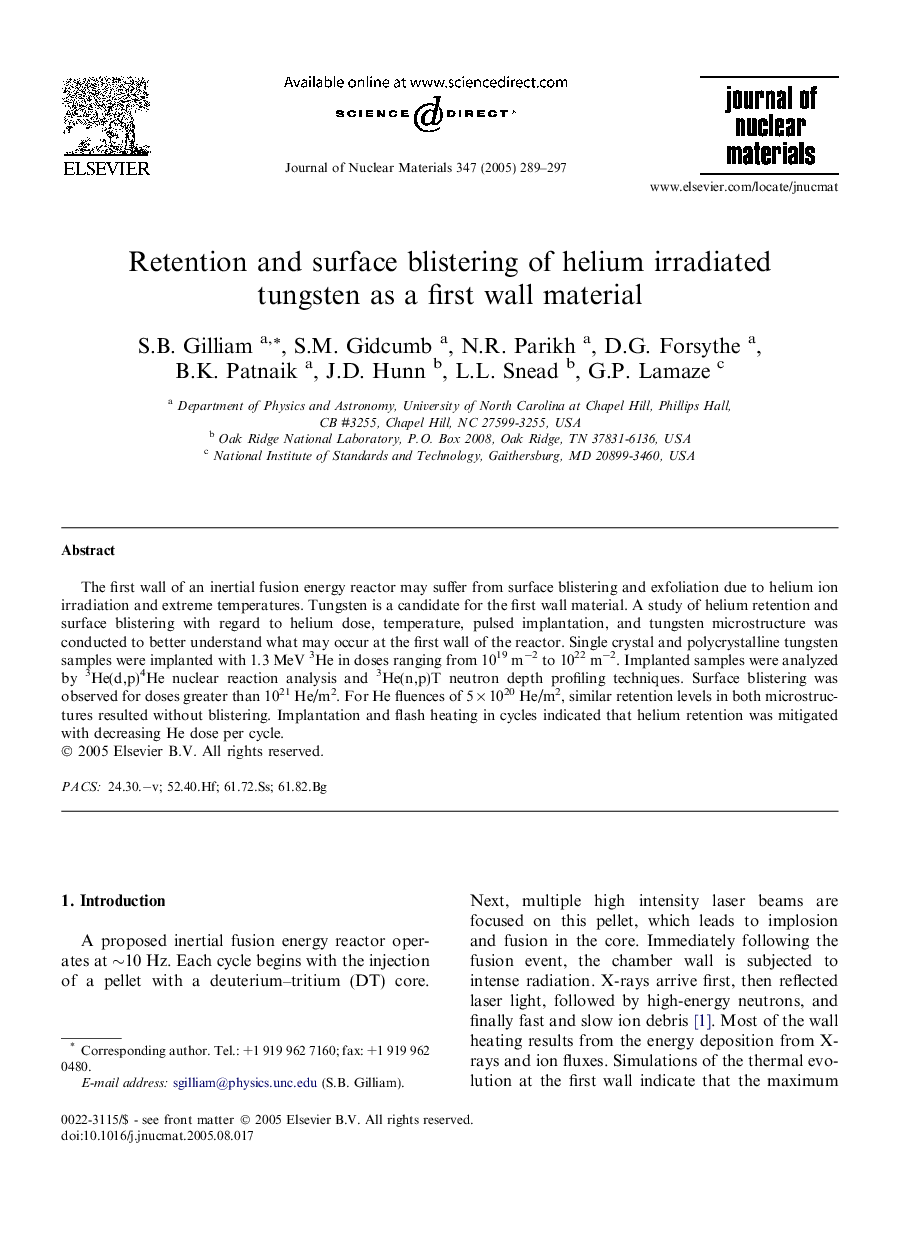| Article ID | Journal | Published Year | Pages | File Type |
|---|---|---|---|---|
| 10645177 | Journal of Nuclear Materials | 2005 | 9 Pages |
Abstract
The first wall of an inertial fusion energy reactor may suffer from surface blistering and exfoliation due to helium ion irradiation and extreme temperatures. Tungsten is a candidate for the first wall material. A study of helium retention and surface blistering with regard to helium dose, temperature, pulsed implantation, and tungsten microstructure was conducted to better understand what may occur at the first wall of the reactor. Single crystal and polycrystalline tungsten samples were implanted with 1.3Â MeV 3He in doses ranging from 1019Â mâ2 to 1022Â mâ2. Implanted samples were analyzed by 3He(d,p)4He nuclear reaction analysis and 3He(n,p)T neutron depth profiling techniques. Surface blistering was observed for doses greater than 1021Â He/m2. For He fluences of 5Â ÃÂ 1020Â He/m2, similar retention levels in both microstructures resulted without blistering. Implantation and flash heating in cycles indicated that helium retention was mitigated with decreasing He dose per cycle.
Related Topics
Physical Sciences and Engineering
Energy
Nuclear Energy and Engineering
Authors
S.B. Gilliam, S.M. Gidcumb, N.R. Parikh, D.G. Forsythe, B.K. Patnaik, J.D. Hunn, L.L. Snead, G.P. Lamaze,
